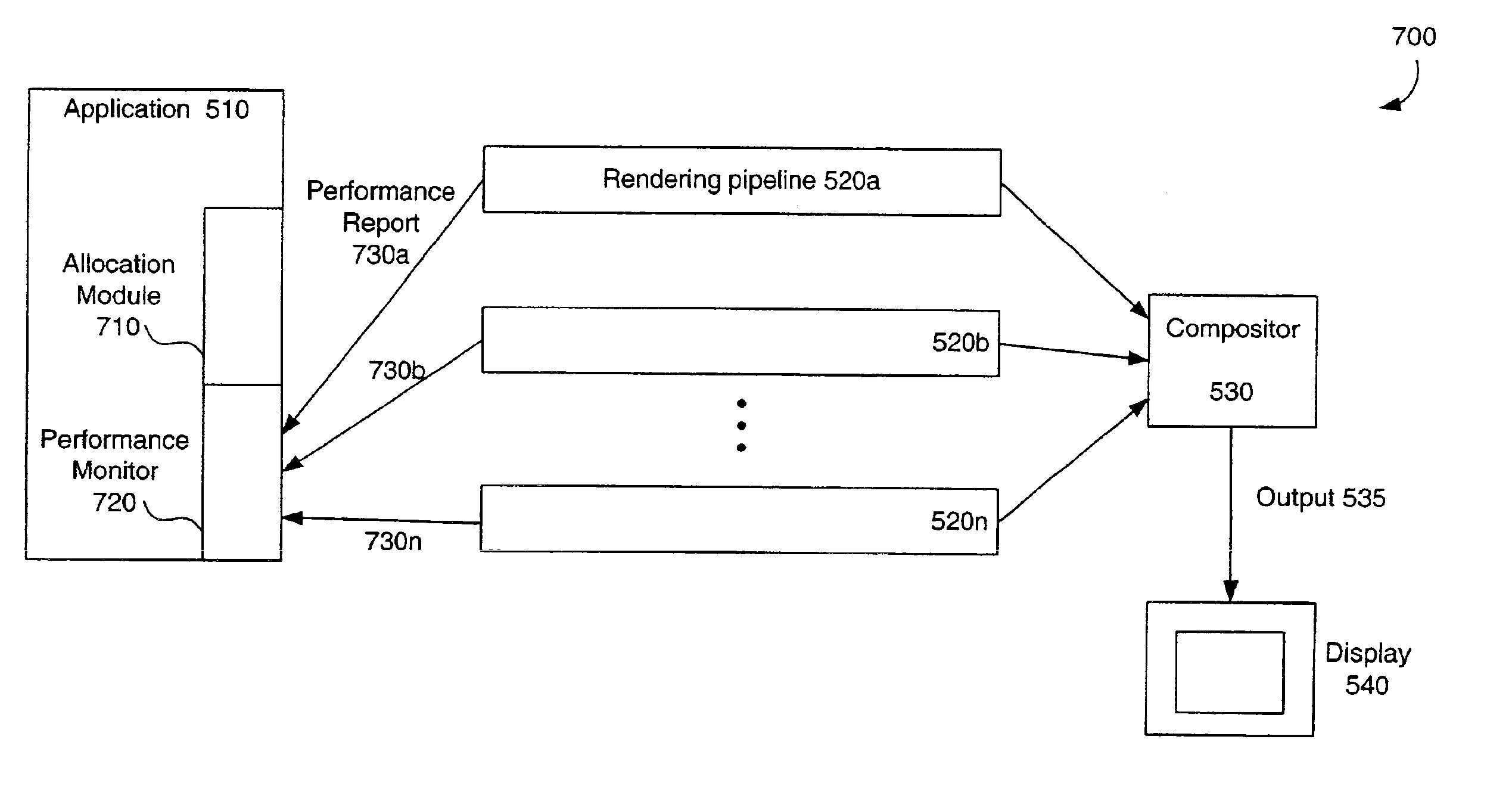System, method, and computer program product for near-real time load balancing across multiple rendering pipelines
a computer graphics system and load balancing technology, applied in the field of computer graphics system performance, can solve the problems of not the rendering frame cannot proceed as quickly, and the performance of a multiple pipeline computer graphics system may not be much better than the performance of a single pipeline computer graphics system, so as to reduce increase the load of this pipeline, and increase processing.
- Summary
- Abstract
- Description
- Claims
- Application Information
AI Technical Summary
Benefits of technology
Problems solved by technology
Method used
Image
Examples
Embodiment Construction
I. Overview
[0032]The invention described herein is a system, method, and computer program product for creating a sequence of computer graphics frames using a plurality of rendering pipelines. For each frame, each rendering pipeline renders a subset of the total amount of graphics data. The output of each rendering pipeline represents a portion of the frame. In an embodiment of the invention, each portion of the frame is rectangular. Each rectangle is referred to hereinafter as a tile. Each rendering pipeline is therefore responsible for the rendering of its own particular tile in a given frame. After completion of a frame, each rendering pipeline then produces a performance report. The performance report states the amount of time that was required to render a tile in the current frame. At the completion of a frame, each rendering pipeline sends its performance report to a performance monitor. The performance monitor determines whether or not there was a significant disparity between...
PUM
 Login to View More
Login to View More Abstract
Description
Claims
Application Information
 Login to View More
Login to View More - R&D
- Intellectual Property
- Life Sciences
- Materials
- Tech Scout
- Unparalleled Data Quality
- Higher Quality Content
- 60% Fewer Hallucinations
Browse by: Latest US Patents, China's latest patents, Technical Efficacy Thesaurus, Application Domain, Technology Topic, Popular Technical Reports.
© 2025 PatSnap. All rights reserved.Legal|Privacy policy|Modern Slavery Act Transparency Statement|Sitemap|About US| Contact US: help@patsnap.com



